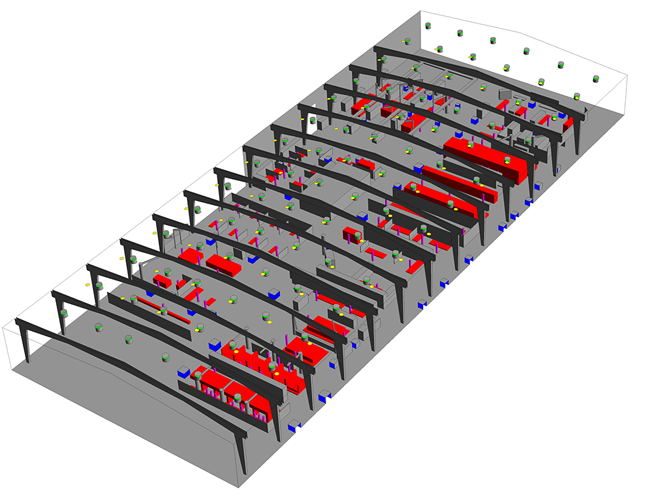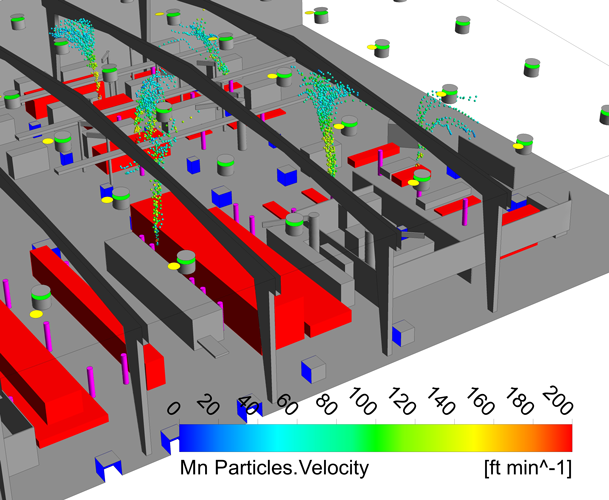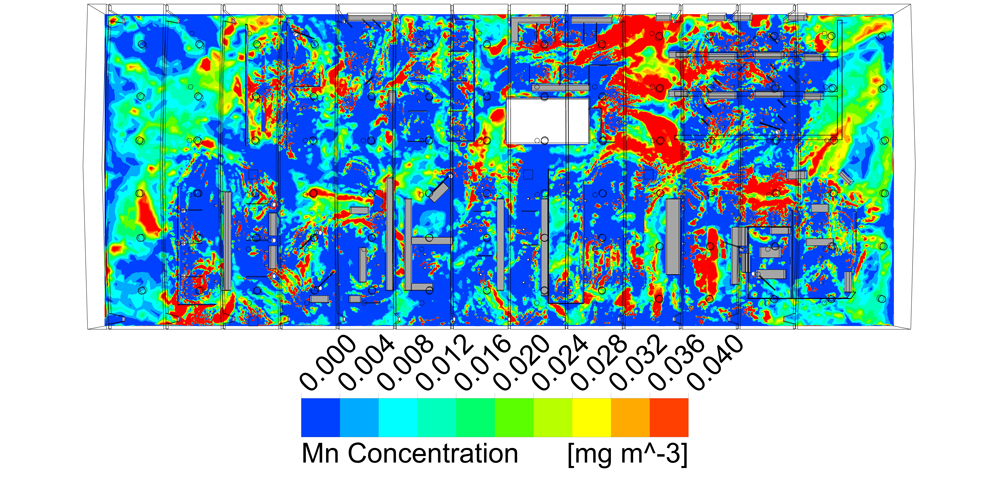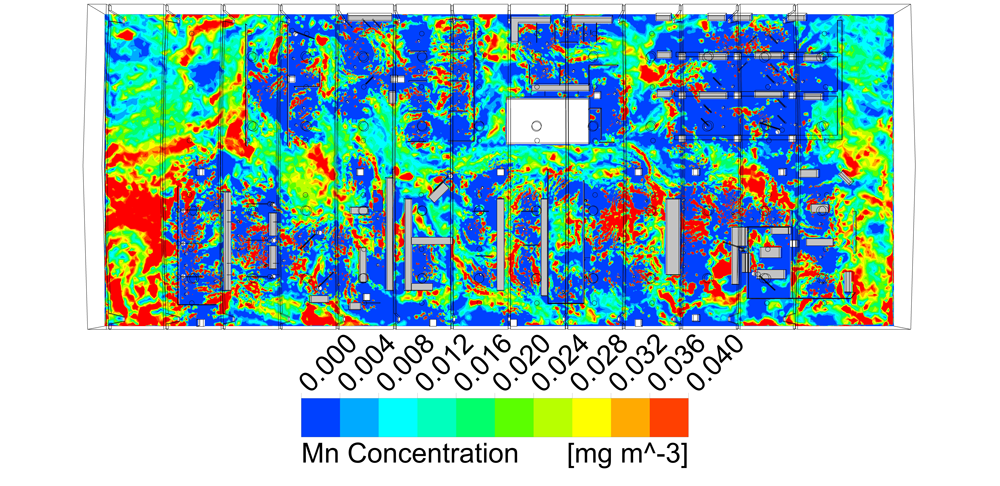During the COVID-19 pandemic, we’ve seen an increased focus on indoor air quality – especially regarding the spread of infectious diseases in all types of indoor environments. Since one path of transmission is through exhaled droplets both large and small, the engineering community is particularly interested in how those particles move in indoor environments.
Although gaseous contaminants tend to follow the path of the airflow, particulates, depending on their size and density, may not. For example, a cough or a sneeze ejects a range of particle sizes; the smallest particles remain suspended in the air for a long time while the larger ones drop to the floor.
Particle tracking is one tool that has helped us understand how these particles behave. In a broad sense, a particle tracking model introduces a fixed number of discrete particles into a computational fluid dynamics (CFD) simulation. It then calculates the aerodynamic forces, such as lift, drag and buoyancy, acting on the particles to trace the trajectory of each simulated particle in the CFD model.
The Predict team recently conducted a CFD analysis for a 43,000 sq. ft. welding line in a plant that manufactures tour buses. The welding process emits 0.5 µm manganese particles into the air, which tend to stay airborne due to their small size. According to the National Institute for Occupational Safety and Health, inhaling high concentrations of these particles has been linked to adverse health conditions affecting the lungs, kidneys and the central nervous system. Seeing how the manganese particles are concentrated in the workspace is crucial to maintaining a healthy environment for the plant’s employees.
Figure 1 shows a CFD model of the welding line. The welding line houses multiple welding jigs for the various bus subassemblies and has a total of 90 active welders. Various low-level (DFXi) and high-level (DR360) displacement diffusers supply the space with air, with returns installed in the ceiling.





